Kalanchoe Plant
- October 26, 2023
- 0 comment
The Kalanchoe plant, often referred to as the “Flaming Katy” or “Widow’s Thrill,” is a popular succulent known for its striking, vibrant flowers and easy-care nature. Native to Madagascar, this resilient plant has become a favorite among both novice and experienced gardeners. Kalanchoes typically feature thick, fleshy leaves that store water, making them well-suited for arid environments.

They come in a variety of colors, from red, pink, and orange to yellow and white, with some varieties even producing multi-colored blooms. These plants thrive in bright, indirect sunlight and well-draining soil, making them perfect for indoor or outdoor settings.
Their low maintenance requirements, including infrequent watering, make them an ideal choice for those with busy lifestyles or limited gardening experience. Kalanchoes are also appreciated for their air-purifying qualities. Whether used as a cheerful houseplant or a decorative addition to a garden, Kalanchoe plants are renowned for their resilience, making them a delightful choice for plant enthusiasts of all levels.

| Characteristics | Description |
| Scientific Name | Kalanchoe spp. |
| Common Names | Flaming Katy, Widow’s Thrill |
| Family | Crassulaceae |
| Native to | Madagascar |
| Plant Type | Succulent |
| Foliage | Thick, fleshy leaves |
| Flower Colors | Red, pink, orange, yellow, white (varies by variety) |
| Light Requirements | Bright, indirect sunlight |
| Soil Type | Well-draining |
| Watering | Allow soil to dry between waterings |
| Maintenance | Low maintenance |
| Growth Habit | Upright, compact |
| Height | Typically 6-12 inches (varies by variety) |
| Hardiness Zone | Varies by species (usually 10-12) |
| Uses | Indoor houseplant, outdoor ornamental plant |
| Special Features | Air-purifying qualities |
| Bloom Period | Typically in late winter to early spring |
| Propagation | From leaf or stem cuttings |
| Toxicity | Mildly toxic to pets if ingested |
| Lifespan | Perennial, with proper care |
| Disease and Pest Resistance | Generally resistant to most common plant pests and diseases |
Botanical Beauty of Kalanchoe Plant
The Kalanchoe plant, scientifically known as Kalanchoe spp., is a botanical marvel that captivates with its striking beauty and remarkable characteristics. Native to Madagascar, this succulent plant has found its way into homes and gardens worldwide, earning it the affectionate nicknames “Flaming Katy” and “Widow’s Thrill.” In this article, we will explore the botanical allure of the Kalanchoe plant, shedding light on its woodland elegance, ecological importance, cultivation, and conservation, as well as its fragrance, soil stabilization properties, common uses, and the numerous benefits it offers.
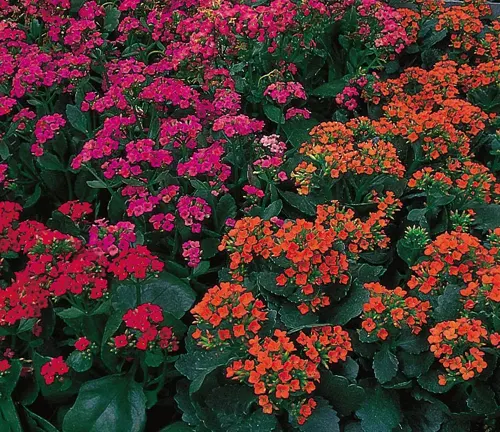
Woodland Elegance

One of the most captivating features of the Kalanchoe plant is its woodland elegance. With fleshy, water-storing leaves and a wide range of colorful, eye-catching flowers, it adds a touch of nature’s grandeur to any setting. The Kalanchoe’s robust, compact growth habit and lush foliage provide a sense of tranquility reminiscent of a woodland oasis, making it a popular choice for both indoor and outdoor gardens.
Ecological Importance
Kalanchoe plants play a vital role in their native habitat and beyond. These succulents are not just pretty faces; they serve as an essential food source for pollinators such as bees and butterflies. Their nectar-rich blooms attract these insects, aiding in pollination and contributing to biodiversity. This ecological role underscores the importance of preserving the natural habitats where Kalanchoe thrives.
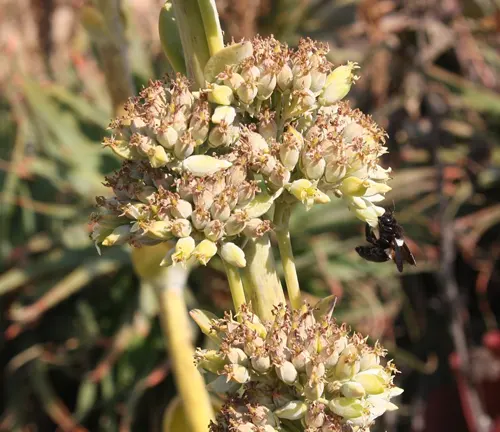
Cultivation and Conservation
Cultivating Kalanchoe plants is a delight for both experienced and novice gardeners. They are well-suited to arid environments, requiring minimal care and thriving in well-draining soil. While Kalanchoe is widely cultivated for its ornamental value, it’s essential to support conservation efforts to protect the plant’s native habitat in Madagascar. Sustainable harvesting practices and habitat preservation are crucial to ensure the continued existence of these remarkable succulents.
Fragrance
While the visual appeal of Kalanchoe is evident, what often surprises many is its fragrance. Some Kalanchoe species emit a delicate, sweet scent, adding a multisensory experience to your garden or living space. This fragrant quality can elevate the overall ambiance, making the Kalanchoe even more cherished.
Soil Stabilization

Kalanchoe’s fleshy leaves serve a practical purpose in their native habitat and beyond. The ability to store water enables these plants to withstand arid conditions and helps prevent soil erosion. In some regions, they are used for soil stabilization and erosion control, demonstrating their ecological importance beyond their ornamental value.
Common Uses
Kalanchoe’s versatility extends to various applications. While commonly grown as a houseplant, it also finds use in outdoor gardens, floral arrangements, and as a gift plant. Its vibrant blooms and low maintenance requirements make it a favorite choice for decorating homes and events, infusing color and charm.
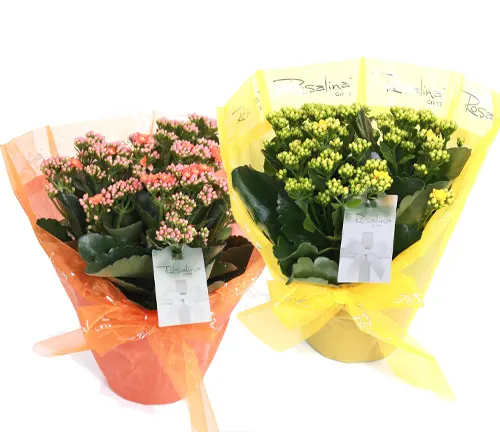
Benefits
Beyond their aesthetic appeal, Kalanchoe plants offer a range of benefits. They are known for their air-purifying properties, helping to improve indoor air quality. Additionally, their low maintenance needs make them an excellent choice for those with busy schedules or limited gardening experience. Their ability to brighten up spaces and contribute to a sense of well-being further adds to their appeal.
Different Species
Kalanchoe blossfeldiana
This is one of the most popular and widely cultivated species. It’s known for its vibrant, long-lasting flowers in shades of red, orange, pink, and yellow.
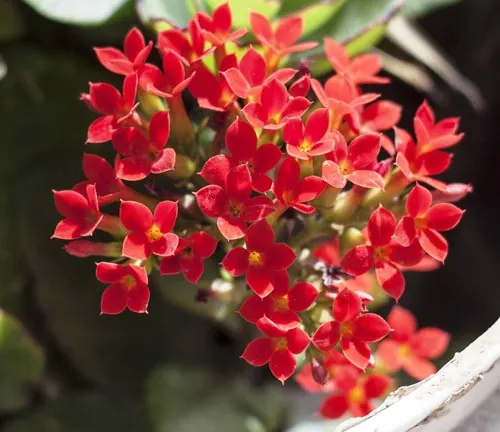

Kalanchoe tomentosa
Commonly called “Panda Plant” due to its fuzzy, silvery-green leaves with brown spots. It’s a favorite among succulent enthusiasts.
Kalanchoe thyrsiflora
Also known as the “Paddle Plant” or “Flapjacks,” this species has round, flat leaves that are grayish-green and tinged with red along the edges.
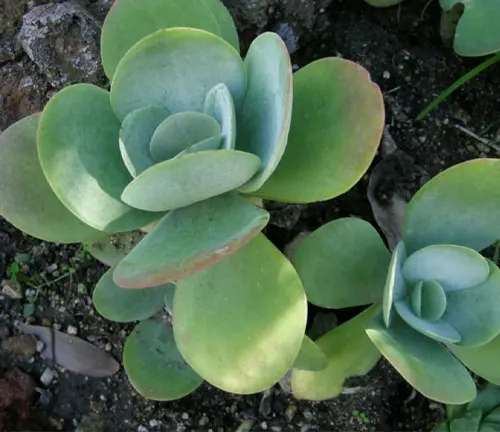

Kalanchoe luciae
Often confused with Kalanchoe thyrsiflora, this species, also known as “Flapjacks” or “Paddle Plant,” has a more vibrant red coloration along the leaf edges.
Kalanchoe daigremontiana
Commonly referred to as the “Mother of Thousands,” this plant produces small plantlets along the edges of its leaves, giving it a unique appearance.
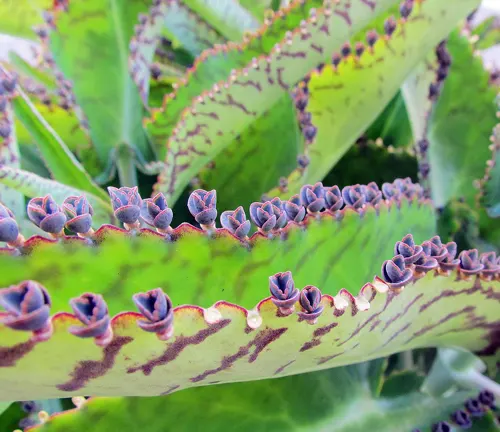
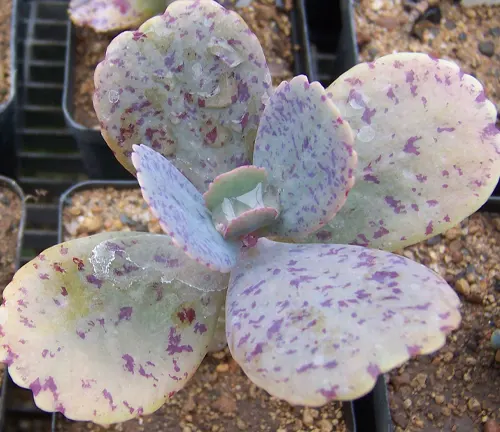
Kalanchoe marmorata
Known as the “Penwiper Plant,” this species features marbled, green and white leaves with attractive, irregular patterns.
Kalanchoe fedtschenkoi
Often called “Lavender Scallops” due to its lavender-gray leaves with scalloped edges. It’s a low-growing, trailing variety.
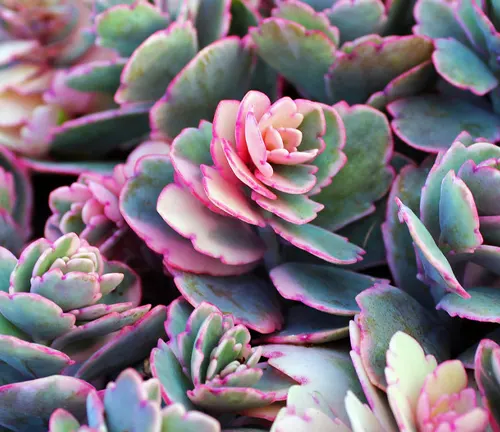

Kalanchoe pinnata
Also known as the “Life Plant” or “Cathedral Bells,” this species has a long history of traditional medicinal use in various cultures.
Kalanchoe millotii
This species has elongated, silver-green leaves covered in fine, rust-colored hairs, giving it a unique texture and appearance.

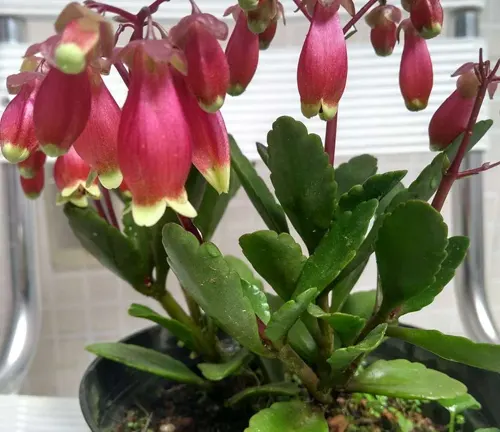
Kalanchoe porphyrocalyx
Recognizable by its gray-green leaves with distinctive purple spots and margins, making it a visually striking succulent.
Frequently Asked Questions (FAQs)
1. What is a Kalanchoe plant?
Kalanchoe is a genus of succulent plants known for its colorful flowers and fleshy leaves. They are popular houseplants and garden ornamentals.
2. How do I care for a Kalanchoe plant?
Kalanchoes thrive in bright, indirect sunlight and well-draining soil. Allow the soil to dry between waterings and avoid overwatering. They prefer average indoor temperatures.
3. Can I grow Kalanchoe outdoors?
Yes, many Kalanchoe species can be grown outdoors in warm climates. They should be protected from frost and extreme heat.
4. How often should I water my Kalanchoe?
Water sparingly, allowing the soil to dry about an inch deep between waterings. Overwatering can lead to root rot.
5. What kind of pot should I use for my Kalanchoe?
Choose a pot with good drainage to prevent waterlogged soil. Terra cotta or other breathable materials are often recommended.
6. When do Kalanchoe plants bloom?
Kalanchoe plants typically bloom in late winter to early spring, although this can vary depending on the species and growing conditions.
7. Can I propagate my Kalanchoe plant?
- Yes, Kalanchoes are easy to propagate from leaf or stem cuttings. Simply allow the cuttings to callus, then plant them in well-draining soil.
8. Are Kalanchoe plants toxic to pets?
Yes, Kalanchoes are considered mildly toxic to pets if ingested. It’s best to keep them out of reach of curious animals.
9. How do I prevent leggy growth in my Kalanchoe plant?
To prevent leggy growth, provide your Kalanchoe with adequate sunlight. Rotate the pot occasionally to ensure even growth.
10. What are the common pests and diseases that affect Kalanchoe plants?
Kalanchoes are generally resistant to most common pests and diseases. However, watch out for mealybugs and aphids. Overwatering can lead to fungal issues.
11. What is the best way to display Kalanchoe plants in my home?
Kalanchoes are versatile and can be displayed in decorative pots or containers. Their colorful blooms make them an attractive addition to windowsills, tabletops, and hanging baskets.
12. Do Kalanchoe plants have any special uses or benefits?
Kalanchoes are known for their air-purifying qualities and are used for decorative purposes. Some species have traditional medicinal uses in various cultures.






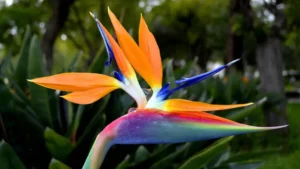


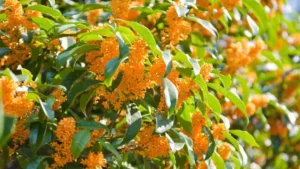
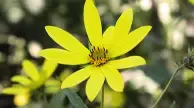

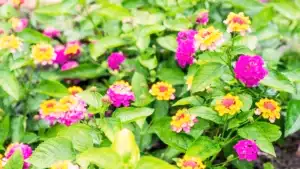
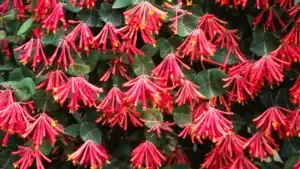
Leave your comment